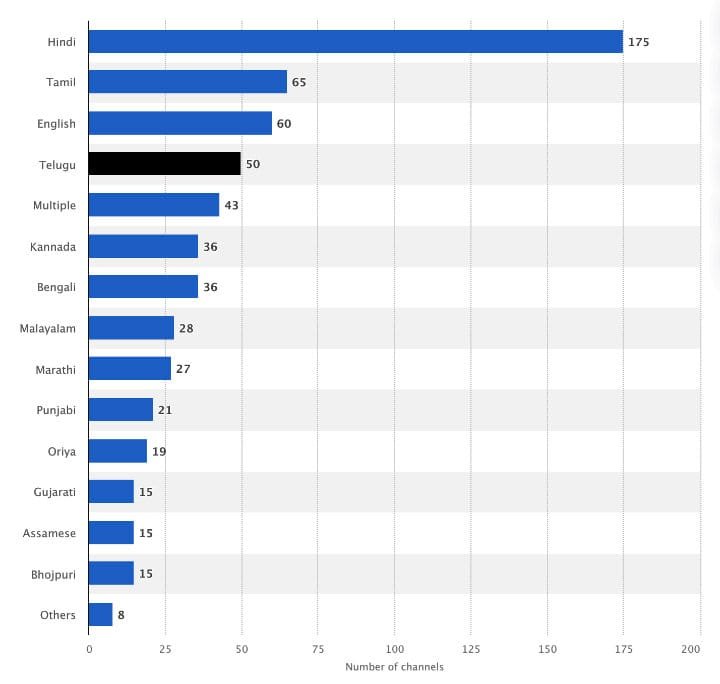Public Opinion Meaning
Public opinion is essential in shaping societies, influencing policies, and driving social change in today’s interconnected world. What is public opinion, and how has our understanding changed over time? This exploration examines public opinion, tracing its origins from Walter Lippmann’s work to its current forms in modern India.
Walter Lippmann’s “Public Opinion”

To understand public opinion, we should begin with Walter Lippmann’s important 1922 book, “Public Opinion.” Lippmann was a key American journalist and political commentator who established the foundation for our current understanding of public opinion and its connection to media.
Lippmann outlined public opinion by highlighting several key aspects:
- Pictures in People’s Heads: At its core, Lippmann argued that public opinions are “the pictures inside men’s heads.” These are the mental images and perceptions people hold about themselves, others, their needs, purposes, and relationships. Lippmann pointed out that these pictures often fail to represent reality accurately.
- The Pseudo-Environment: Lippmann introduced the idea of a “pseudo-environment,” which refers to a subjective and biased mental image of the world that is incomplete and often fictional. People form opinions based on this pseudo-environment, but their actions play out in the real world, creating a disconnect between perception and reality.
- Stereotypes and Symbols: According to Lippmann, public opinion heavily relies on stereotypes, symbols, and simplified mental models. These cognitive shortcuts help people make sense of a complex world that largely exists outside their direct experience.
- Mediated Reality: Lippmann acknowledged that most individuals acquire their understanding of public affairs indirectly by relying on media and various sources instead of firsthand experience. This mediated picture of reality significantly shapes opinions.
- Emotional and Irrational: Lippmann suggests that emotion, prejudice, and irrational elements frequently influence public opinion more than reason and factual information. This emotional component makes public opinion unstable and sometimes unpredictable.
- Subject to Manipulation: Lippmann believed that media, propaganda, and elite discourse could shape and manipulate public opinion. This adaptability raised concerns about the potential for mass manipulation.
- Limited Competence: Lippmann was skeptical of the average citizen’s capacity to form fully informed, rational opinions on complex public issues. This perspective challenged idealistic notions of an informed citizenry.
- Collective Will: Lippmann viewed public opinion as a collective will or sentiment shaped by the combination of numerous individual opinions and emotions despite its limitations.
The “Hypodermic Needle” Theory

Lippmann’s work on public opinion closely aligns with the “hypodermic needle” or “magic bullet” theory of media effects from the early 20th century. This theory suggests that media messages directly and immediately influence audiences, similar to a hypodermic needle injecting ideas into the public consciousness.
Key points about Lippmann’s view and direct media effects include:
- Powerful Media Influence: Lippmann believed that mass media had a strong, direct influence on shaping public opinion. This matched the common perception of media as a powerful influence in society.
- Pseudo-Environment Creation: The media plays a key role in forming a “pseudo-environment,” which is central to Lippmann’s theory. He argued that media constructs a simplified version of the complex world, which people respond to as if it were reality.
- Stereotype Reinforcement: Lippmann emphasized the media’s role in creating and reinforcing stereotypes. He viewed these stereotypes as essential simplifications for understanding the world while also acknowledging their risk of oversimplification and bias.
- Limited Public Capacity: Lippmann expressed doubt about the public’s capacity to form informed opinions on complex issues, emphasizing the media’s essential role in shaping public thought. This perspective positioned media as a powerful tool for shaping public discourse.
- Elite Influence: Lippmann argued that elites could shape public opinion significantly through their control and use of media. This idea raised questions about power concentration and the potential for manipulating public sentiment.
Evolution of Public Opinion Theory
While Lippmann’s work laid a crucial foundation, our understanding of public opinion has evolved significantly since the 1920s. Subsequent research and theories have challenged and refined Lippmann’s ideas.
The Limited Effects Model

In the mid-20th century, researchers like Paul Lazarsfeld developed the “limited effects” model, which argued that media influence was not as direct or powerful as Lippmann and others had suggested. This model emphasized factors like selective exposure, selective perception, and interpersonal influence in shaping public opinion.
Key concepts include:
- Selective exposure: People tend to seek out information that aligns with their existing beliefs.
- Selective perception: Individuals interpret media messages through the lens of their pre-existing attitudes.
- Interpersonal influence: Personal relationships and social networks play a significant role in shaping opinions.
This model suggests that the meaning of public opinion is not solely dependent on media content but rather results from a more complex interaction between media messages, individual predispositions, and social interactions. It suggests that people are not passive recipients of information but active participants in the opinion-formation process.
The Limited Effects Model proposes a more balanced view, acknowledging the agency of individuals and the importance of social contexts in forming public attitudes and beliefs.
Agenda-Setting Theory
Maxwell McCombs and Donald Shaw’s agenda-setting theory, proposed in the 1970s, suggested that while media might not tell people what to think, it does tell them what to think about. This theory suggests that media plays a key role in shaping public discourse by determining which issues are highlighted.
Framing Theory
Framing theory builds on agenda-setting by analyzing how media presents issues and how this affects public opinion. By highlighting certain aspects of an issue while downplaying others, the media can shape how the public perceives and thinks about that issue.
The Spiral of Silence
Elisabeth Noelle-Neumann’s spiral of silence theory suggests that people tend to withhold unpopular opinions due to the fear of social isolation. This theory highlights the complex interplay between public opinion, media, and individual behavior.

Walter Lippmann’s “Public Opinion” introduced the idea that media plays a crucial role in shaping public perceptions and attitudes. This idea has changed significantly in the digital age, affecting how public opinion is formed and shared.
Media fragmentation in the internet era has significantly affected public opinion formation. Lippmann observed that today’s diverse online sources have fragmented the information ecosystem, unlike the unified media landscape. This fragmentation challenges the notion of a unified public opinion, leading to multiple, often conflicting narratives.
Echo chambers and filter bubbles, driven by algorithmic curation and personal preferences, have complicated the meaning of public opinion. These digital enclaves often reinforce existing beliefs, potentially leading to more polarized views—a phenomenon Lippmann might not have anticipated in his time.
The swift formation and spread of opinions enabled by social media platforms have accelerated the evolution of public opinion. This rapid pace challenges Lippmann’s concept of a more thoughtful approach to opinion formation, as ideas and reactions now disseminate virally, frequently surpassing traditional media and official sources.
Citizen journalism and user-generated content have transformed the landscape of information creation, altering the power dynamics that Lippmann outlined. This change has disrupted the traditional gatekeepers of public opinion, allowing a broader range of voices to contribute to the public discourse.
Finally, big data and opinion mining techniques have revolutionized how public opinion is tracked and analyzed. These tools provide deep insights into public sentiment, offering real-time analysis and detail that were impossible in Lippmann’s time.
Lippmann’s insight about media’s role in shaping public opinion is still relevant, but the digital landscape has changed how public opinion is created, spread, and understood. The fast-paced nature of online discourse has complicated how public opinion forms and is expressed, creating both challenges and opportunities for understanding society’s collective mindset.
Public Opinion in the Indian Context

India, as the world’s largest democracy, offers a unique and complex landscape for studying public opinion. Several factors shape the dynamics of public opinion in India:
Diverse Media Landscape
India boasts a vibrant and diverse media ecosystem, including:
Traditional Media
- Newspapers: India had 1,44,520 publications registered as of March 31, 2021, including 20,512 daily newspapers and 1,24,008 other periodicals. (source: Ministry of Information and Broadcasting, Government of India, Annual Report 2021-22, p. no. 53).
- Television: India had 920 permitted private satellite TV channels as of December 2023 (source: Telecom Regulatory Authority of India, Government of India).

- Radio: As of December 2021, India had 384 private FM Radio channels operational in 112 cities spread across 26 States and 5 Union Territories. In addition, Prasar Bharati has 483 All-India Radio (AIR) broadcasting centers with FM transmitters across the country.
Digital Media
- Internet penetration: As per data provided by TRAI, overall internet penetration in India is 61.62%, with 850.95 million internet subscribers as of March 2023.
- Online news portals: While exact numbers are difficult to determine due to the rapidly changing digital landscape, India has seen a significant rise in digital-only news platforms. Some prominent examples include The Wire, Scroll.in, and The Print.
- Social media: India had 462 million social media users as of January 2024. This represents:
- 32.2% of India’s total population
- 61.5% of India’s total internet user base
Regional Media
India’s linguistic diversity is reflected in its media, with numerous regional language outlets shaping local public opinion. The Indian constitution recognizes 22 official languages, many of which have robust media ecosystems.
- Newspapers: In 2021-22, the Hindi press maintained its lead in the Indian press. There were 16,793 publications in Hindi. Marathi held second place with 2,807 publications. English ranked third with 2,485 publications, followed by Telugu with 2,248, Gujarati with 2,028, Urdu with 1,701, Kannada with 1,300, Tamil with 869, Bengali with 551, Odia with 446, and Malayalam with 346 publications.
- Television: As of 2021, there were over 350 regional language TV channels in India (source: Statista).

- The study titled Indian Languages – Understanding India’s Digital News Consumer was published in May 2023 by Kantar, an international consultancy, in partnership with Google. The report outlines the news consumption preferences of internet users in India who prefer Indian languages. In July 2022, approximately 729 million people used the internet in India, with 345 million users in urban areas and 384 million in rural areas.
Challenges in Measuring Public Opinion in India

Measuring public opinion in India involves distinct challenges.
- Linguistic diversity: It presents challenges due to 22 official languages and numerous dialects, making representative sampling across linguistic groups complex.
- Rural-Urban Divide: There are notable differences in access to information and media between rural and urban areas, which can distort opinion measurements.
- Socioeconomic disparities in education and economic status can influence how opinions are formed and expressed within the population.
- Cultural Sensitivities: Some topics may be taboo or sensitive in different cultures, impacting the expression of honest opinions.
The Future of Public Opinion in India
As India progresses, various trends are expected to influence the future of public opinion:
- Improving Digital Literacy: As digital skills advance, we may observe more critical and nuanced interactions with online information.
- Rise of Regional Voices: Increasing internet access in rural areas could enhance regional viewpoints in national discussions.
- Data Privacy Concerns: With the increasing awareness of data privacy, individuals may alter their interactions with digital platforms and how they share their opinions online.
- AI and Public Opinion: The use of AI to analyze and influence public opinion is expected to become more advanced and widespread.
Conclusion
Our understanding of public opinion has evolved since Walter Lippmann’s time, yet many of his core insights are still relevant today. The idea of a “pseudo-environment” shaped by media is particularly relevant in today’s social media bubbles and fake news landscape. Stereotypes and symbols significantly influence public opinion, as seen in the viral spread of memes and hashtags.
However, the Indian context also reveals the limitations of Lippmann’s somewhat pessimistic view of public opinion. India’s democracy, despite challenges, shows how a diverse population can engage with complex issues effectively. Digital technology has intensified Lippmann’s concerns about media influence while also providing new opportunities for diverse voices in public discourse.
Lippmann’s work is essential for understanding how media influences public perception and democracy in today’s complex public opinion landscape. Combining foundational insights with an understanding of the unique cultural, technological, and social dynamics in contexts like India allows for a more effective approach to engaging with public opinion in our interconnected world.
Understanding public opinion is essential for navigating or influencing social and political change. Understanding how public opinion forms and evolves is essential for policymakers, business leaders, social activists, and engaged citizens to make informed decisions and drive meaningful societal change.




